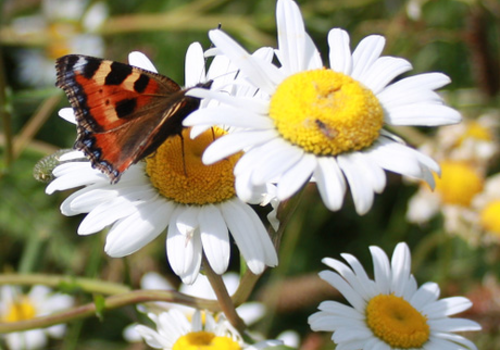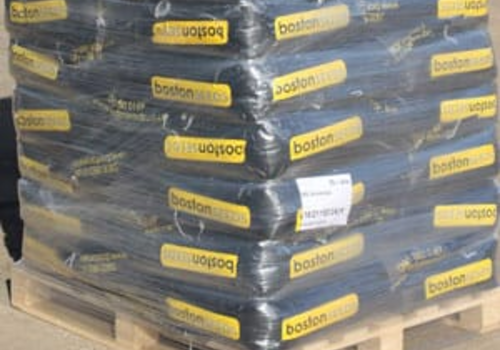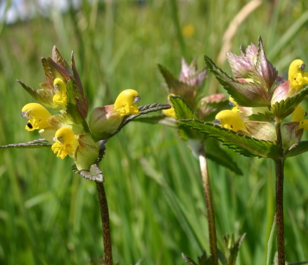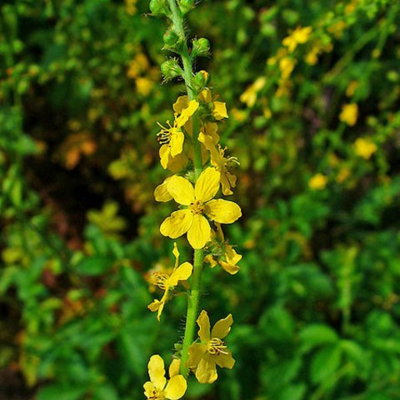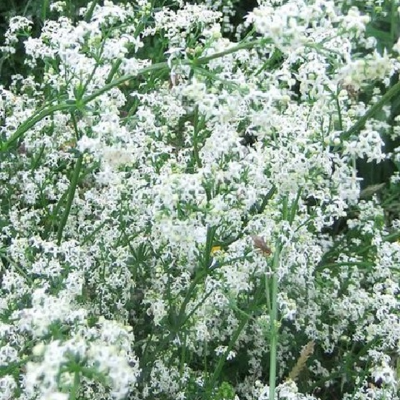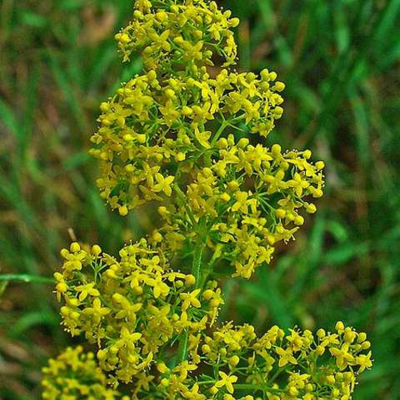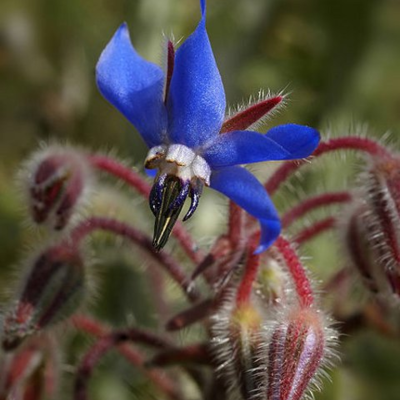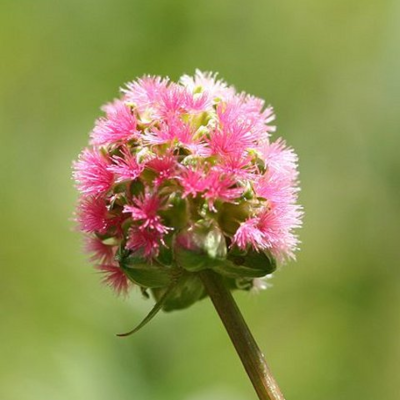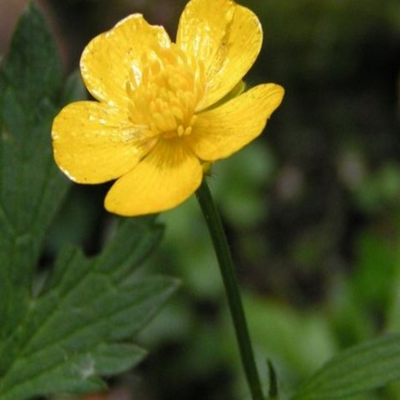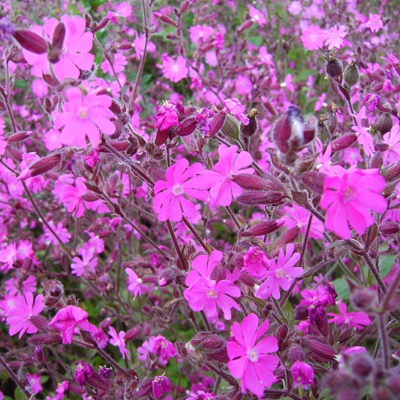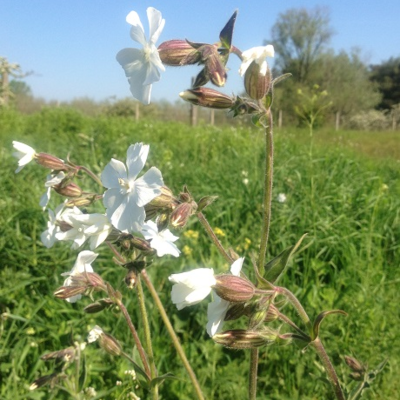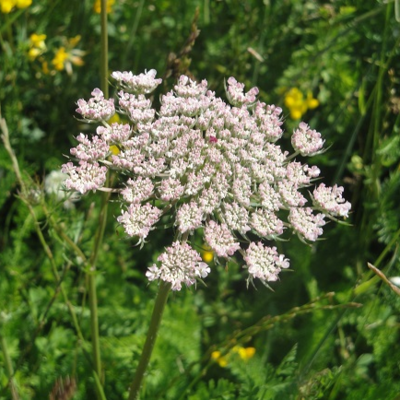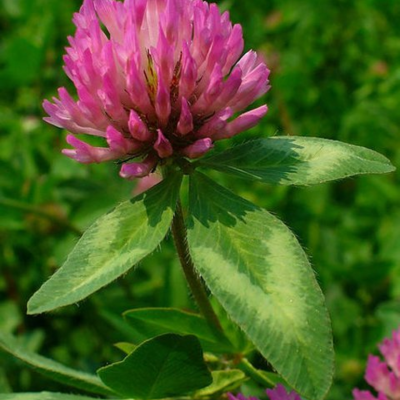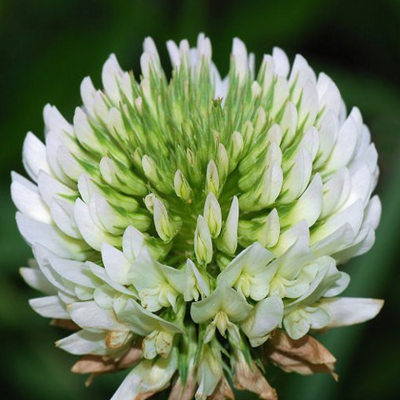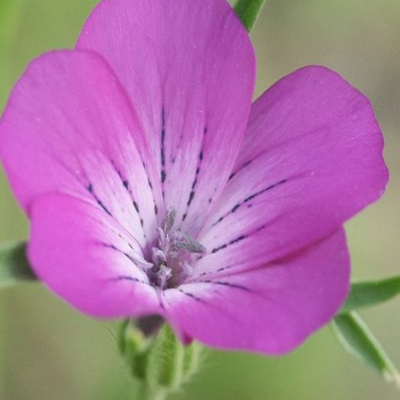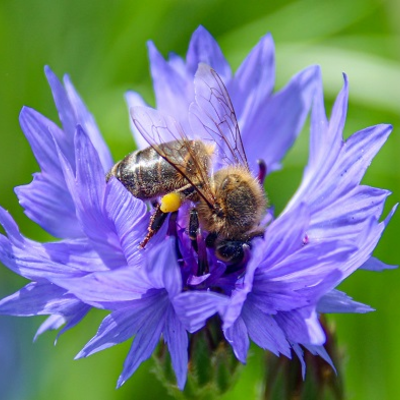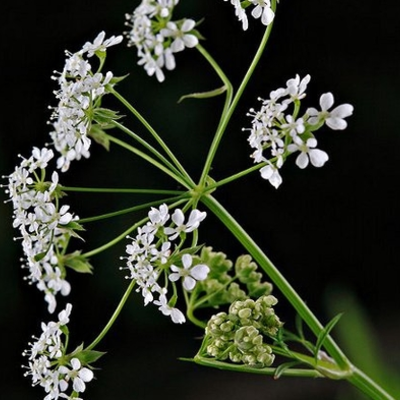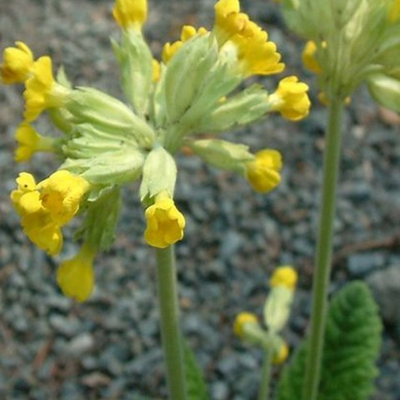Wildflower Seeds A to Z
From Agrimony right the way though to Yellow-rattle, there's a whole host of wildflower seeds you can choose from if a particular look is what you're going for. Each type of wildflower has its own unique set of qualities. Whether you're keen to create a meadow full of sunkissed golden wildflowers with healing properties like that of St John's-wort or you want a wildflower garden that looks pretty in pink when dressed in Greater Knapweed or Purple Loosestrife - we've got you covered.
Don't hesitate to get in touch to speak to one of our experts or request a catalogue to view our full range. Ordering regularly or looking for large volumes? Click here to apply for a trade account today - we review all applications within one working day.
Display view
Browse by

Plants for Pollinators highlights plants selected by the RHS as scientifically proven to tackle the declines in bees, butterflies and other pollinators.
Harvest 2024 Seed Now In Stock For Next Day Delivery.
Exceptional quality yellow rattle seeds produced from UK meadow collections, freshly harvested in 2024. Cleaned to exacting standards of purity and germination to ensure we only supply the highest quality seeds. Order online today for next day delivery.
Yellow rattle is an important addition to any wildflower meadow, slowing down the rate of grass growth to create more space and opportunity for a diverse range of wildflower species. Commonly found across natural grassland meadows throughout the UK.
- Type: Annual
- Height: 20–50cm
- Flowers: May-September
- Best Sown: Autumn
- Soil Requirement: Well-drained, moist
- Light Requirement: Full sun
- Natural Habitat: Grassland, meadows
- Also known as: Corn Rattle, Hay Rattle, Penny Grass
- Seeds per gram: 270

Plants for Pollinators highlights plants selected by the RHS as scientifically proven to tackle the declines in bees, butterflies and other pollinators.
Common Agrimony is an attractive, medium-height meadow plant. Its yellow flowers on tall spires are ideally placed for bees and a number of species of wild birds. Steeped in British folklore, legend has it that placing a common agrimony flower under one's head will cause them to sleep until it is taken away.
- Type: Perennial
- Height: 40-80cm
- Flowers: June-September
- Best Sown: Autumn
- Soil Requirement: Well-drained, neutral
- Light Requirement: Full sun or partial shade
- Natural Habitat: Southern UK, grassland, meadows, roadsides
- Also known as: Church Steeples, Sticklewort, Aaron's Rod, Clot-Bur, Fairy's Wand, Money-In-Both-Pockets, Salt-And-Pepper, Sweethearts
- Seeds per gram: 60
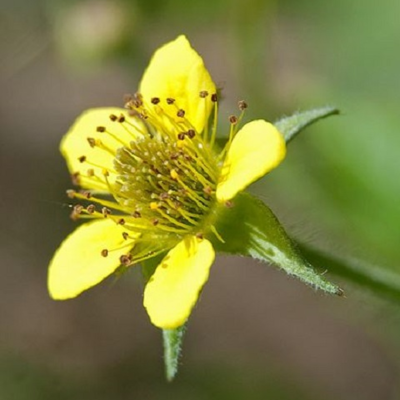

Plants for Pollinators highlights plants selected by the RHS as scientifically proven to tackle the declines in bees, butterflies and other pollinators.
The Wood Avens bears small, nectar-rich yellow flower heads, followed by burr-like seed heads. Once prized for medicinal use by herbalists and named a 'blessed herb', this hardy, leafy plant can still bless your garden with a little sweetness and sunshine in a shady spot.
- Type: Perennial
- Height: 30-60cm
- Flowers: May-August
- Best Sown: Autumn
- Soil Requirement: Well-drained
- Light Requirement: Partial shade
- Natural Habitat: Woods, hedgerows, roadsides
- Also known as: Herb Bennett, Colewort, St. Benedict's Herb, Blessed Herb
- Seeds per gram: 1400
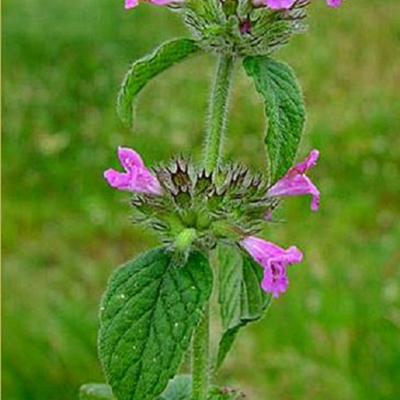

Plants for Pollinators highlights plants selected by the RHS as scientifically proven to tackle the declines in bees, butterflies and other pollinators.
The distinctly-shaped and aromatic leaves of the basil plant surely need no introduction, but gardeners may be pleasantly surprised at their flowers, which bloom in whorls of royal purple and pink. As a plant beloved by pollinators and with plenty of uses outside of the garden, this wildflower has something to offer for just about anyone!
- Type: Perennial
- Height: 30-60cm
- Flowers: July-September
- Best Sown: Autumn
- Soil Requirement: Well-drained, calcareous
- Light Requirement: Full sun
- Natural Habitat: Dry meadows, forests, hedgerows
- Also known as: Cushion Calamint
- Seeds per gram: 2500

Plants for Pollinators highlights plants selected by the RHS as scientifically proven to tackle the declines in bees, butterflies and other pollinators.
A hardy perennial with small, white starry flowers, best clambering up hedges or shrubs. Sweetly scented, Hedge Bedstraw will attract pollinators and beneficial insects and is commonly found on dry, grassy hedgebanks and grassland.
- Type: Perennial
- Height: 30-60cm
- Flowers: July-September
- Best Sown: Autumn or Spring
- Soil Requirement: Well-drained, dry
- Light Requirement: Full sun or partial shade
- Natural Habitat: Grassland, meadows
- Also known as: False Babies Breath
- Seeds per gram: 2000
This item is currently unavailable

Plants for Pollinators highlights plants selected by the RHS as scientifically proven to tackle the declines in bees, butterflies and other pollinators.
Much like its odd title, the ‘Lady’s Bedstraw’ carries riches in a rough-and-tumble manner, bearing vast whorls and clusters of tiny golden flowers. It also boasts a distinct and sweet scent, even when dried. A hardy, sprawling plant that’s sure to make a fine bed for a wild garden.
- Type: Perennial
- Height: 15-30cm
- Flowers: June-September
- Best Sown: Autumn
- Soil Requirement: Well-drained
- Light Requirement: Full sun or partial shade
- Natural Habitat: Grassy meadows, road verges, clifftops and hills
- Also known as: Maiden’s Hair, Fenwort, Cheese Rennet
- Seeds per gram: 1600
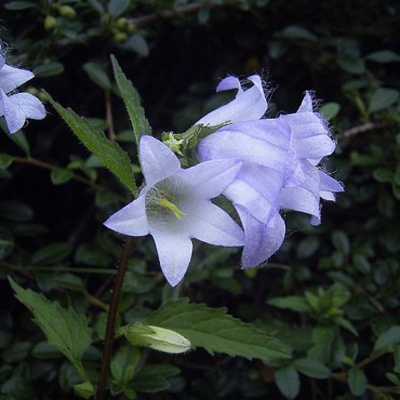

Plants for Pollinators highlights plants selected by the RHS as scientifically proven to tackle the declines in bees, butterflies and other pollinators.
A tall perennial with lower leaves that resemble nettle leaves and large purple bell-shaped flowers that droop from the top. Tall, hairy perennial that flowers in the height of summer and attracts beneficial pollinators and insects.
- Type: Perennial
- Height: 50-100cm
- Flowers: July-September
- Best Sown: Autumn or Spring
- Soil Requirement: Well-drained
- Light Requirement: Partial Shade
- Natural Habitat: Open deciduous woods, scrub and hedgerows
- Also known as: Bats-in-the-Belfy, Throatwort
- Seeds per gram: 4000
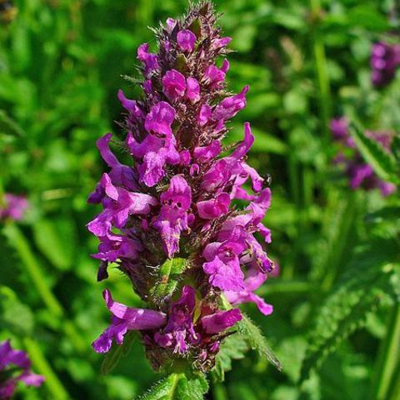

Plants for Pollinators highlights plants selected by the RHS as scientifically proven to tackle the declines in bees, butterflies and other pollinators.
A gorgeous addition to a wildflower garden, bearing spikes of rich purple and red petals, alongside distinct and attractive foliage. Its flowers are also known to attract bees and butterflies and they used to be planted in churchyards for spiritual protection. They grow well in any light, with an affinity for damp soil.
- Type: Perennial
- Height: 30-60cm.
- Flowers: June-August
- Best Sown: Autumn
- Soil Requirement: Moist but well-drained
- Light Requirement: Full sun or partial shade
- Natural Habitat: Grassy meadows, river banks
- Also known as: Bishops’s Wort, Wood Betony, Common Hedgenettle
- Seeds per gram: 600
Once prized for a range of culinary uses, the Borage herb has a unique palette among wild flowers which is sure to spice up your garden. Its brilliant blue, star-shaped flowers and hairy, scarlet stems are attractive to pollinators and easy to grow with minimal fuss.
- Type: Annual
- Height: 30-60cm
- Flowers: June-September
- Best Sown: Spring
- Soil Requirement: Well-drained
- Light Requirement: Full sun and partial shade
- Natural Habitat: Forest verges, meadows
- Also known as: Starflower Cool Tankard, Tailwort
- Seeds per gram: 100
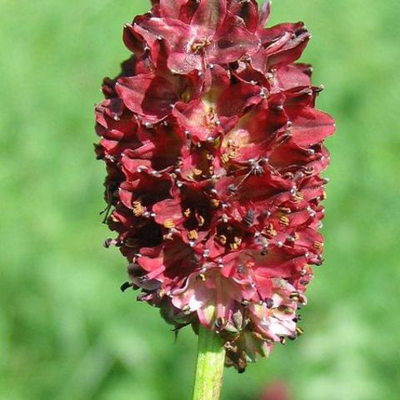

Plants for Pollinators highlights plants selected by the RHS as scientifically proven to tackle the declines in bees, butterflies and other pollinators.
The Great Burnet is a lively-looking plant, sporting crimson flower clusters atop tall, branching stems with distinct jagged leaves. They’re highly attractive to pollinators, and for a good reason; this wild-growing relative of the rose is not to be overlooked!
- Type: Perennial
- Height: 45-90cm
- Flowers: June-September
- Best Sown: Spring or Autumn
- Soil Requirement: Moist but well-drained
- Light Requirement: Full sun and partial shade
- Natural Habitat: Floodplains, meadows, riverbanks
- Also known as: Burnet Bloodwort
- Seeds per gram: 400

Plants for Pollinators highlights plants selected by the RHS as scientifically proven to tackle the declines in bees, butterflies and other pollinators.
A smaller species of burnet, bearing clumps of miniature, round red flowers, followed by a harvest of burred fruit. Its main appeal is its leaves, which smell like cucumber when crushed and are sometimes used for flavouring.
- Type: Perennial
- Height: 20-50cm
- Flowers: May-August
- Best Sown: Autumn
- Soil Requirement: Well-drained
- Light Requirement: Full sun
- Natural Habitat: Chalky grasslands
- Also known as: Garden Burnet, Pimpernelle, Toper’s Plant
- Seeds per gram: 300
A Perennial Plant that has a yellow, glossy flower that is around 2cm in diameter. The foliage belonging to this plant is much coarser than Meadow Buttercup along with being lower-lying to the ground. The leaves are divided into 3 lobes with fraying edges and a hairy appearance. This plant has long, rooting runners which aid in the spread across an area.
- Type: Perennial
- Height: 30-60cm
- Flowers: May-August
- Best Sown: Autumn or Spring
- Soil Requirement: Damp
- Light Requirement: Full sun and partial shade
- Natural Habitat: Woods, wet-moist meadows, farmland, footpaths, wasteland
- Also known as: Little Frog
- Seeds per gram: 500
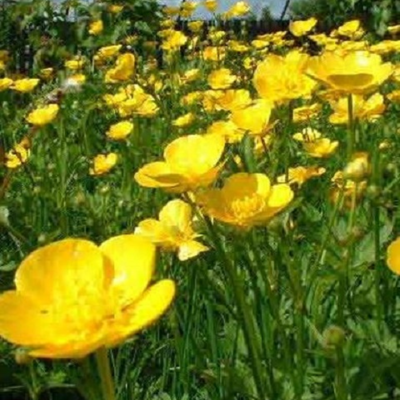

Plants for Pollinators highlights plants selected by the RHS as scientifically proven to tackle the declines in bees, butterflies and other pollinators.
A Perennial Plant commonly found in meadows and pastures. The tallest and most graceful of all the buttercups. The yellow flowers are split into 5 petals. The leaves have a rounded appearance and are split into between 3 to 7 lobes. The Meadow Buttercup does not posses the runners that the creeping buttercup posses.
- Type: Perennial
- Height: 30-90cm
- Flowers: May-August
- Soil Requirement: Damp
- Light Requirement: Full sun
- Natural Habitat: Woodland edges, grasslands, meadows
- Also known as: Tall Buttercup, Common Buttercup, Giant Buttercup
- Seeds per gram: 600

Plants for Pollinators highlights plants selected by the RHS as scientifically proven to tackle the declines in bees, butterflies and other pollinators.
In spite of its name, the Red Campion boasts eye-catching pink petals that make a welcome splash of colour in a shady spot. In mythology, they were a favourite of fairies, and in your garden they’re highly attractive to bees. Flowers shortly after the bluebell- planting them together can create a hedgerow of pink-and-blue eye candy.
- Type: Perennial
- Height: 30-60cm
- Flowers: April-September
- Best Sown: Autumn
- Soil Requirement: Well-drained
- Light Requirement: Partial shade
- Natural Habitat: Hedgerows, woodlands
- Also known as: Hare’s Eye, Ragged Jack, Adder’s Flower
- Seeds per gram: 800

Plants for Pollinators highlights plants selected by the RHS as scientifically proven to tackle the declines in bees, butterflies and other pollinators.
A pure white, five petalled perennial. At night, it produces a clovey scent to attract pollinators. They have a delicate beauty of their own, but they can hybridise when planted alongside red campion to create precious pink and white beauties.
- Type: Perennial
- Height: 30-60cm
- Flowers: May-October
- Best Sown: Spring
- Soil Requirement: Well-drained
- Light Requirement: Partial shade
- Natural Habitat: Roadside verges, hedgerows
- Also known as: Bull Rattle, White Cockle, White Robin
- Seeds per gram: 800
This item is currently unavailable

Plants for Pollinators highlights plants selected by the RHS as scientifically proven to tackle the declines in bees, butterflies and other pollinators.
This wildflower is also commonly known as Queen Anne's Lace. Produces long stalks with a fountain of white, foam-like flowers, often with a dark red central flower. Also produces pleasing feathered foliage upon a hairy stem.
- Type: Biennial
- Height: 30-40cm
- Flowers: June-October
- Best Sown: Autumn
- Soil Requirement: Well-drained
- Light Requirement: Full sun
- Natural Habitat: Cliff sides, grasslands, roadsides
- Also known as: Queen Anne’s Lace
- Seeds per gram: 800
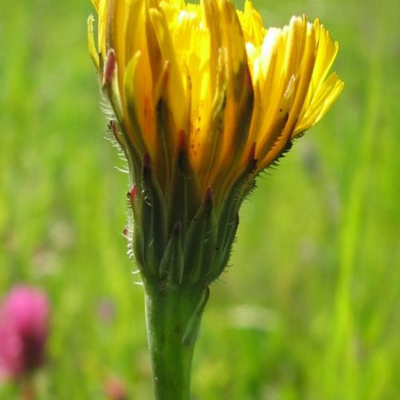

Plants for Pollinators highlights plants selected by the RHS as scientifically proven to tackle the declines in bees, butterflies and other pollinators.
These sunny yellow blooms grow on branched stems and have minimal leaves on the stem. The leaves are seen to have a pimple-like hairy appearance. This wildflower is easy to take care of, and are beloved by pollinators as well. This perennial wildflower is a member of the Daisy family and usually has 2-3 flowers on a branched stem. An excellent meadow flower.
- Type: Perennial
- Height: 30-45cm
- Flowers: May-September
- Best Sown: Autumn
- Soil Requirement: Well-drained
- Light Requirement: Full sun or part shade
- Natural Habitat: Roadsides, grasslands
- Also known as: Flatweed, False Dandelion
- Seeds per gram: 1250
This item is currently unavailable
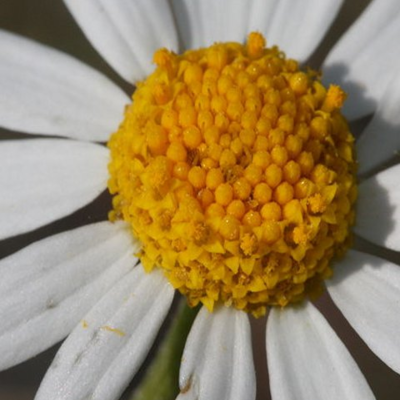

Plants for Pollinators highlights plants selected by the RHS as scientifically proven to tackle the declines in bees, butterflies and other pollinators.
A creeping perennial wildflower with Large, white daisy-like flowers. They’re easy enough to grow along with the benefit of being attractive to pollinating species, and will reward you with a strong aroma similar to apples.
- Type: Annual
- Height: 20-30cm
- Flowers: May-July
- Best Sown: Autumn
- Soil Requirement: Well-drained
- Light Requirement: Full sun
- Natural Habitat: Grasslands
- Also known as: Mayweed, Field Chamomile
- Seeds per gram: 5000
Perfect for pollinators, Wild Red Clover is an easy to grow wildflower with its unique pinkish-red rounded flower heads and trefoil-like leaves.
- Type: Perennial
- Height: 10-20cm
- Flowers: May-September
- Soil Requirement: Well-drained
- Light Requirement: Full sun
- Natural Habitat: Grasslands, roadsides
- Also known as: Beebread, Cow Clover
- Seeds per gram: 1000
Clover plants are especially distinct, sporting spiked white pom-poms of petals and rounded trifoliate leaves. Easy to grow in any environment, and makes for a decent lawn flower.
- Type: Perennial
- Height: 10-20cm
- Flowers: May-September
- Best Sown: Autumn or Spring
- Soil Requirement: Well-drained
- Light Requirement: Full sun
- Natural Habitat: Grasslands, roadsides
- Also known as: Dutch Clover, Ladino Clover
- Seeds per gram: 1500
This item is currently unavailable

Plants for Pollinators highlights plants selected by the RHS as scientifically proven to tackle the declines in bees, butterflies and other pollinators.
The corncockle’s beauty is almost artistic: magenta petals fading to white, laced with veins of deep purple. Grows tall and proud on soft, silvery stems. What’s not to love?
- Type: Annual
- Height: 60-120cm
- Flowers: June-August
- Best Sown: Spring
- Soil Requirement: Well-drained, sandy
- Light Requirement: Full sun
- Natural Habitat: Grasslands, roadsides
- Also known as: Cat’s Eyes, Kiss-Me-Quick
- Seeds per gram: 80

Plants for Pollinators highlights plants selected by the RHS as scientifically proven to tackle the declines in bees, butterflies and other pollinators.
Famed for its unique and beautiful colour, with perfect pale blue petals tinted with purple in a fluffy formation. This wildflower lends itself to many colour combinations and is highly attractive to pollinators.
- Type: Annual
- Height: 30-60cm
- Flowers: June-August
- Best Sown: Autumn or Spring
- Soil Requirement: Well-drained
- Light Requirement: Full sun
- Natural Habitat: Grasslands, farmland
- Also known as: Bachelor’s Button
- Seeds per gram: 200
A perennial wildflower that grows rapidly during the summer months. Cow Parsley has a hollow stem and grows to be very tall. White umbrella-like flowers that look like lace. Usually found in large clusters on roadside verges, hedgerows and woodland areas.
- Type: Perennial
- Height: 60-90cm
- Flowers: April-June
- Best Sown: Autumn or Spring
- Soil Requirement: Well-drained
- Light Requirement: Partial shade
- Natural Habitat: Hedgerows and woodland edges
- Also known as: Queen Anne's Lace, Lady's Lace
- Seeds per gram: 200

Plants for Pollinators highlights plants selected by the RHS as scientifically proven to tackle the declines in bees, butterflies and other pollinators.
A perennial wildflower with an aromatic presence. Cowslip displays a rosette of green, tongue-like leaves upon a green stem. The flowers are deep yellow with orange markings in the center, similar to an egg yolk.
- Type: Perennial
- Height: 10-30cm
- Flowers: April-May
- Best Sown: Autumn or Spring
- Soil Requirement: Well-drained
- Light Requirement: Full sun and partial shade
- Natural Habitat: Meadows, grassland, woodland edges, verges
- Also known as Cowslip Primrose, Oxlip
- Seeds per gram: 1100
Maybe you're looking for something a little more unusual that's a firm favourite with the bees, in which case an ocean blue garden of Borage is what you need. Or what about the Devil's-bit Scabious? A funky looking plant that isn't half as hellish as it sounds.
All of the wildflower seeds we supply here at Boston Seeds are UK native and many of which are certified as Plants for Pollinators by the Royal Horticultural Society. So, not only will you have the most amazing wildflower garden, you'll being seriously doing your bit for the environment, too.
To learn more about each of the plant varieties we supply, check out our Guide to Wildflower Species here.
Have a question about a particular wildflower? Check out our wildflower seed advice pages for more info.
Buy With Confidence

